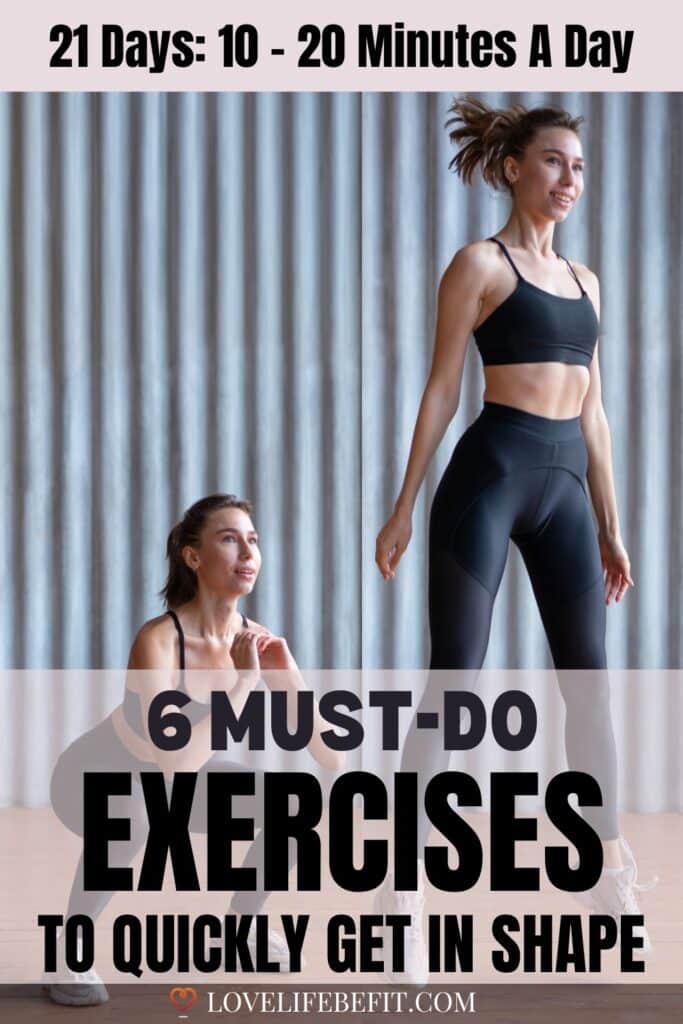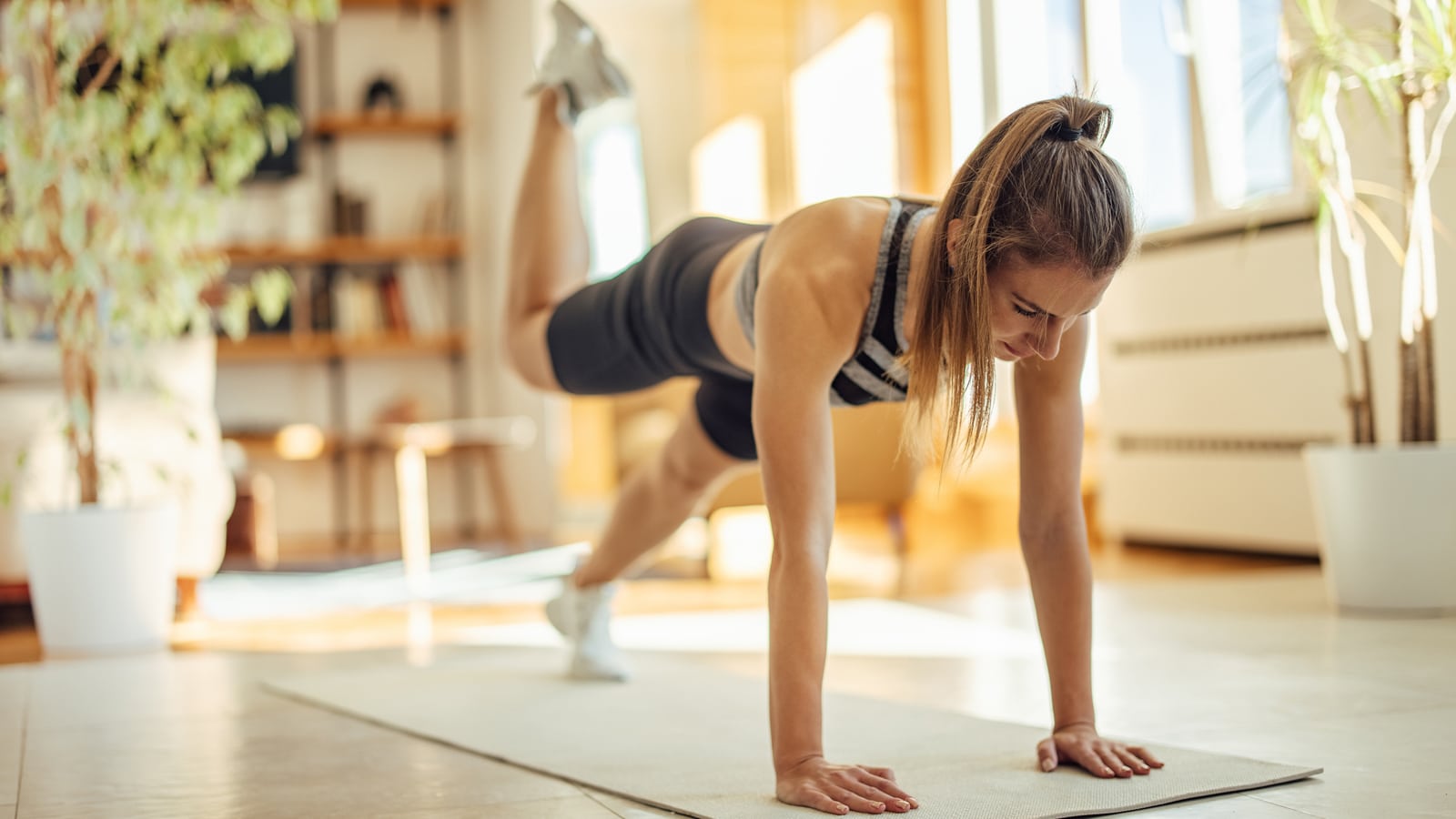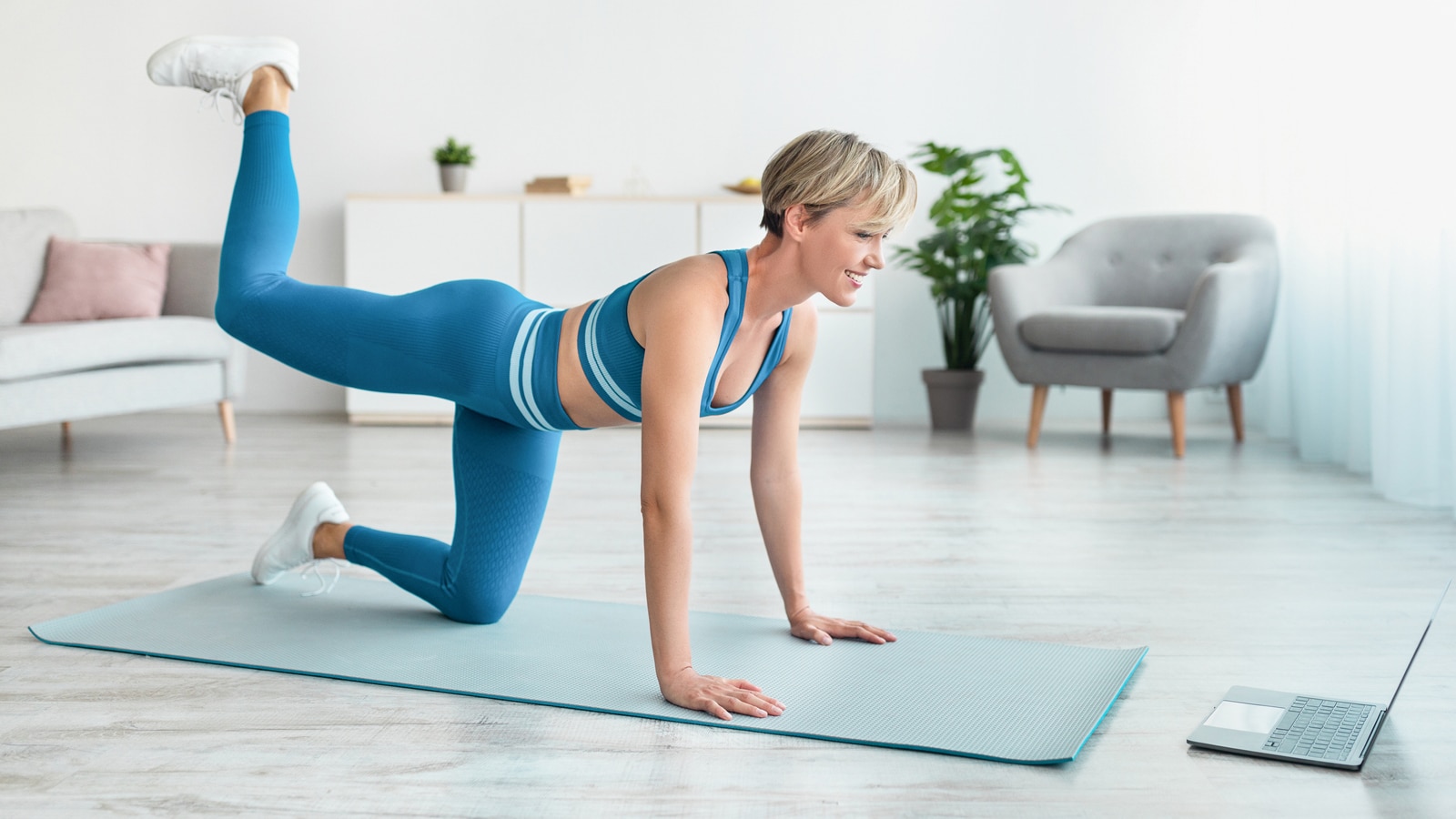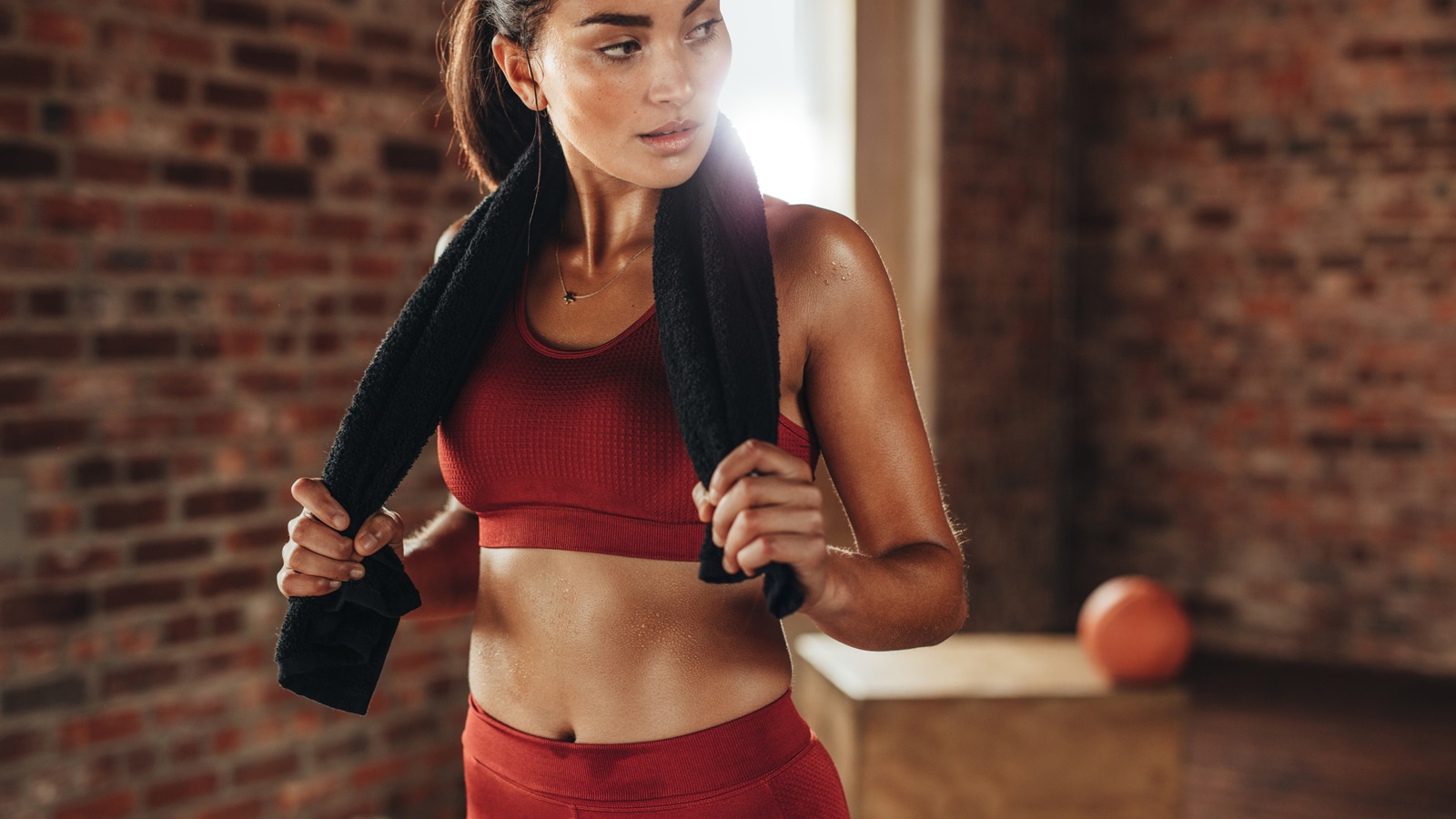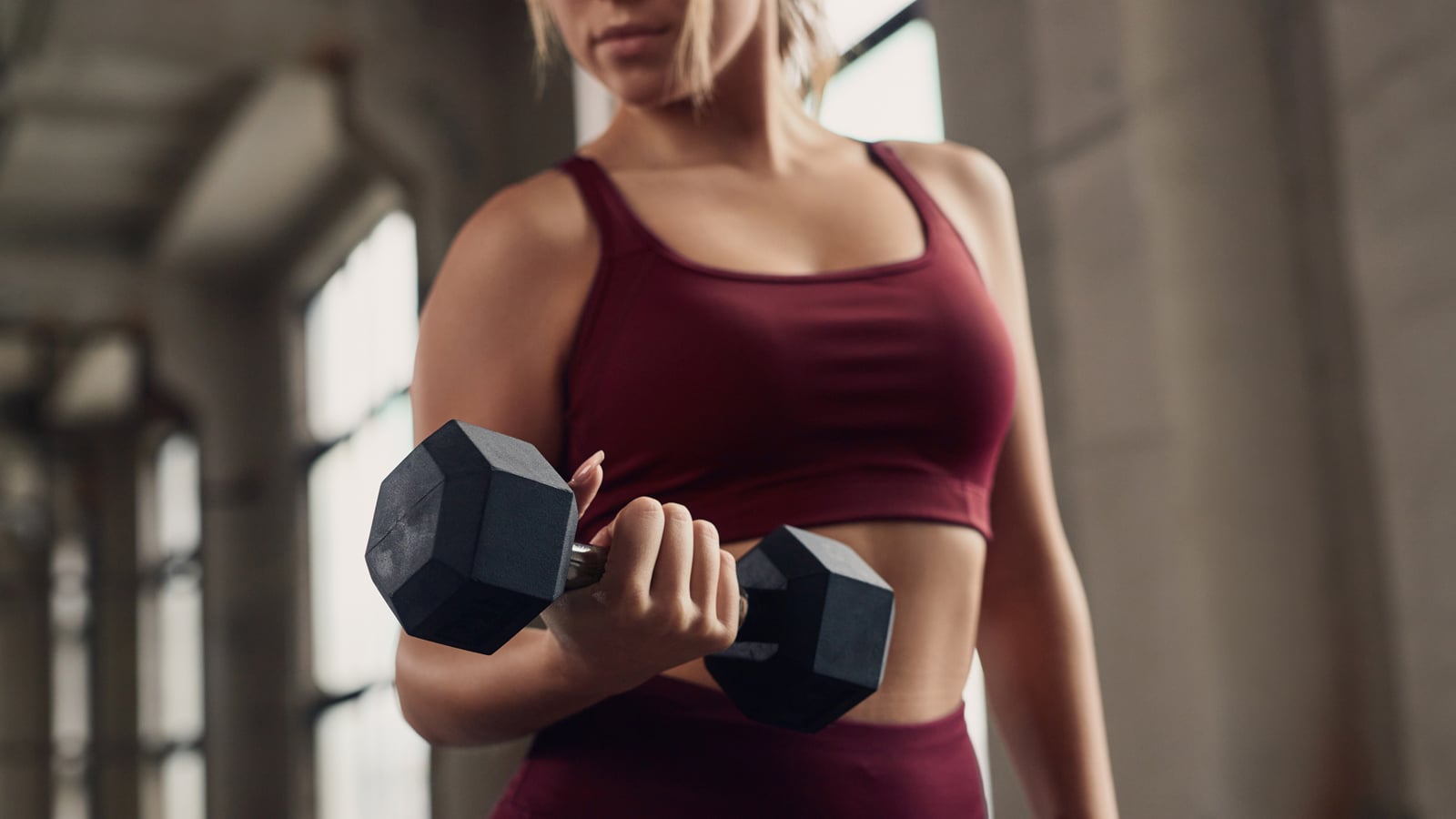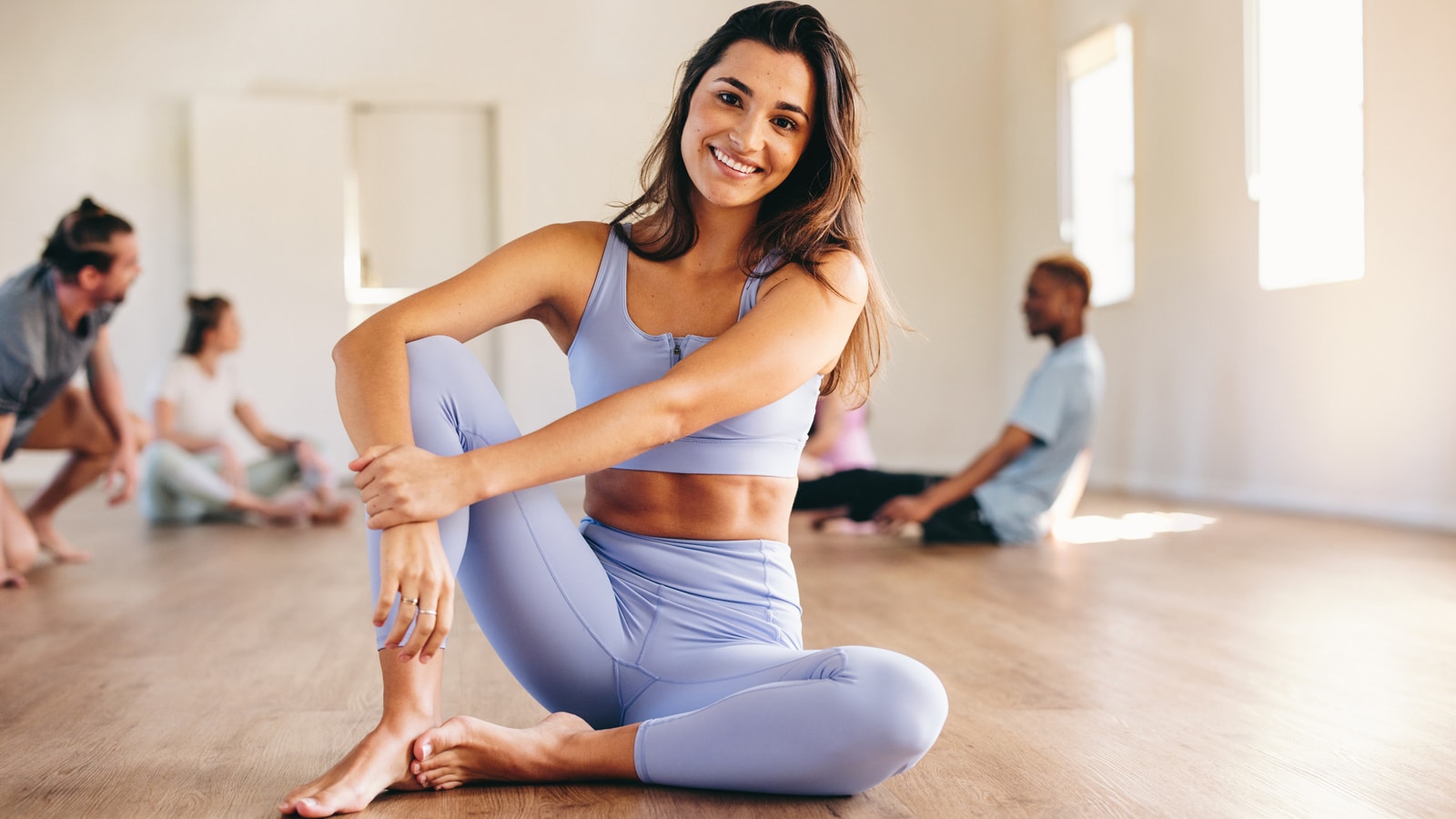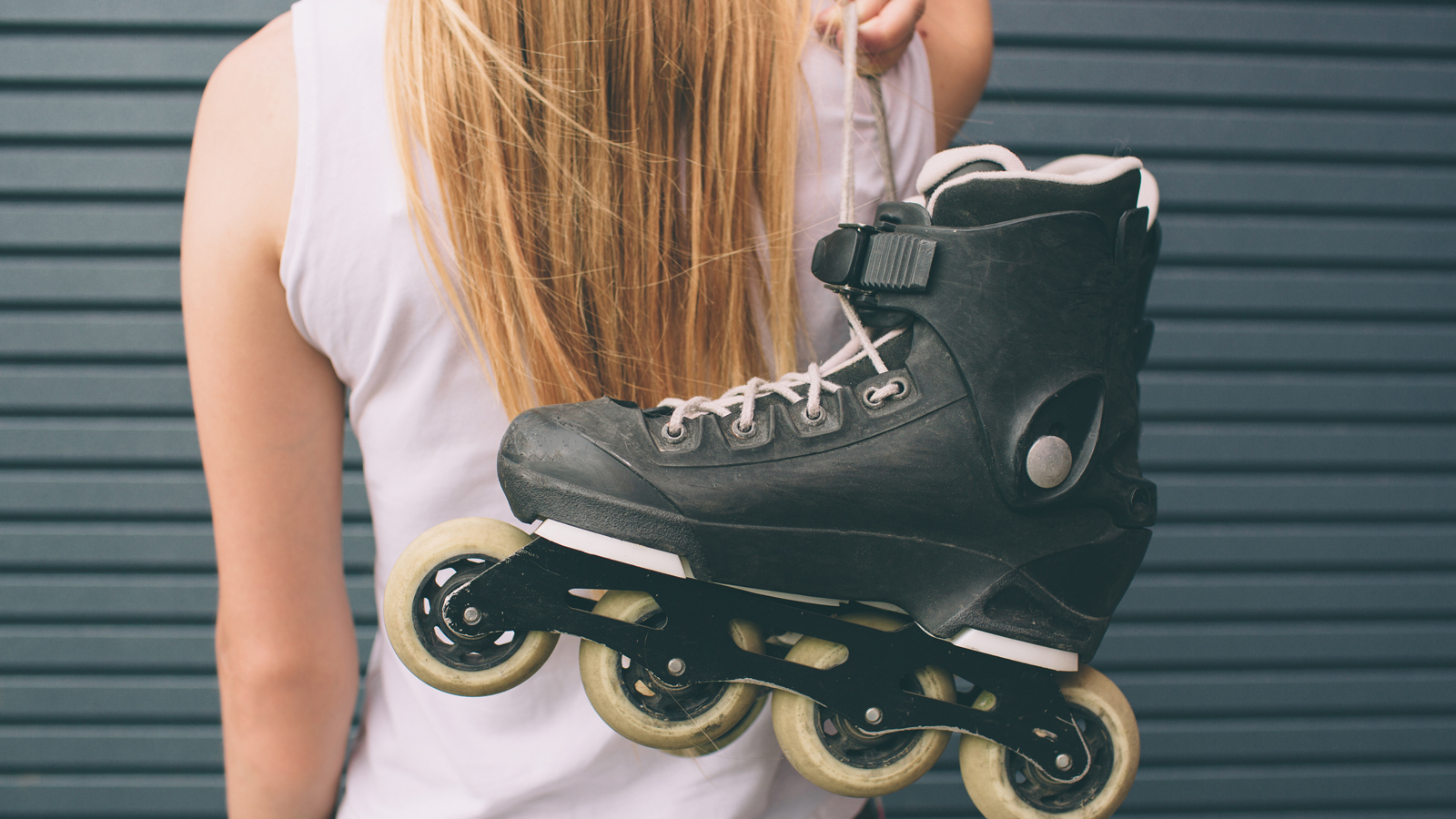6 Must-Do Exercises To Quickly Get In Shape
The best exercises for beginners are the routines you’re motivated to do every day. You don’t want a complicated exercise plan that’s hard to follow or a set of exercises that takes up way too much time. Most of us are busy, right? We need exercise plans we can slot into our daily schedules. Even better if you can exercise at home without going to the gym. These must-do exercises create a simple-to-follow exercise routine. Use them to get into the habit of exercising every day. After 3 weeks, you’ll love the results!
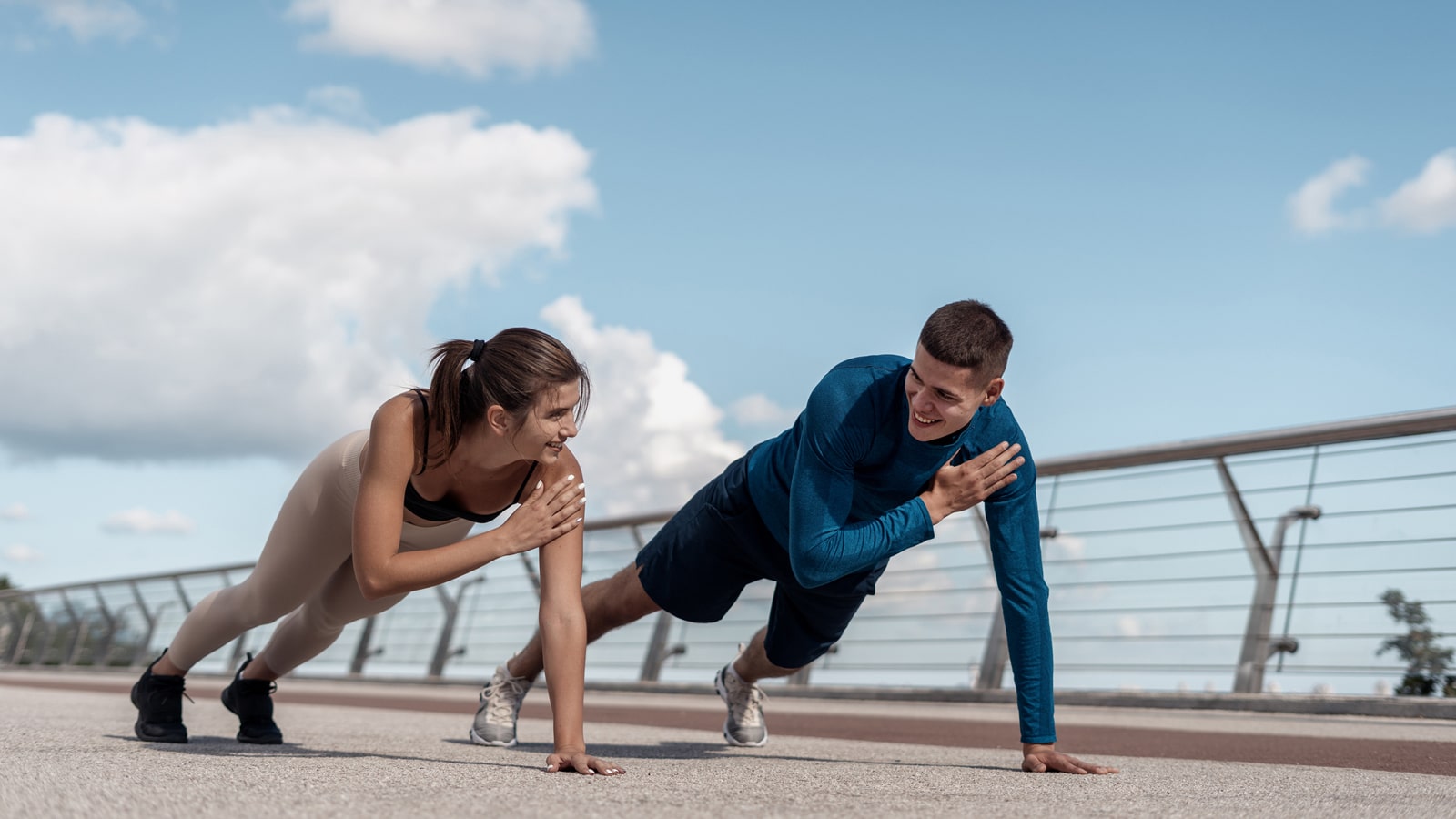
5 Tips To Use This Exercise Plan For Beginners
- Always warm up. I can’t emphasise this enough. Spend 5 minutes moving your whole body. This can be jogging on the spot, busting out your disco dance moves, or doing some moves from a half-remembered aerobics class. Move those arms and legs and shake your booty.
- Exercise every day. Making exercise part of your daily routine will help you stay consistent. Over the first few days, you will feel sore at times as your muscles adapt to the exercise. Try to persist, maybe working out at a lower intensity. It’s okay to feel sore, but if you feel sharp pain, stop immediately and seek medical advice.
- Follow the regressions. There are no prizes for overdoing it. Instead of struggling, use the regression suggestions until you’re strong enough to complete the exercise without any modifications.
- Choose Plan A or Plan B. Plan A is purely bodyweight exercises. The aim is to strengthen as much of your body as possible with just six simple exercises. Plan B uses the same exercise routine as Plan A but adds some cardio, such as walking or running, depending on your current fitness level.
- 3-week exercise plan. Follow your chosen plan for 3 weeks, and you’ll notice an improvement in your fitness. At the end of 3 weeks, you can choose to continue the routine or follow one of our other training plans to expand your bodyweight exercise range and increase your walk/run routine.
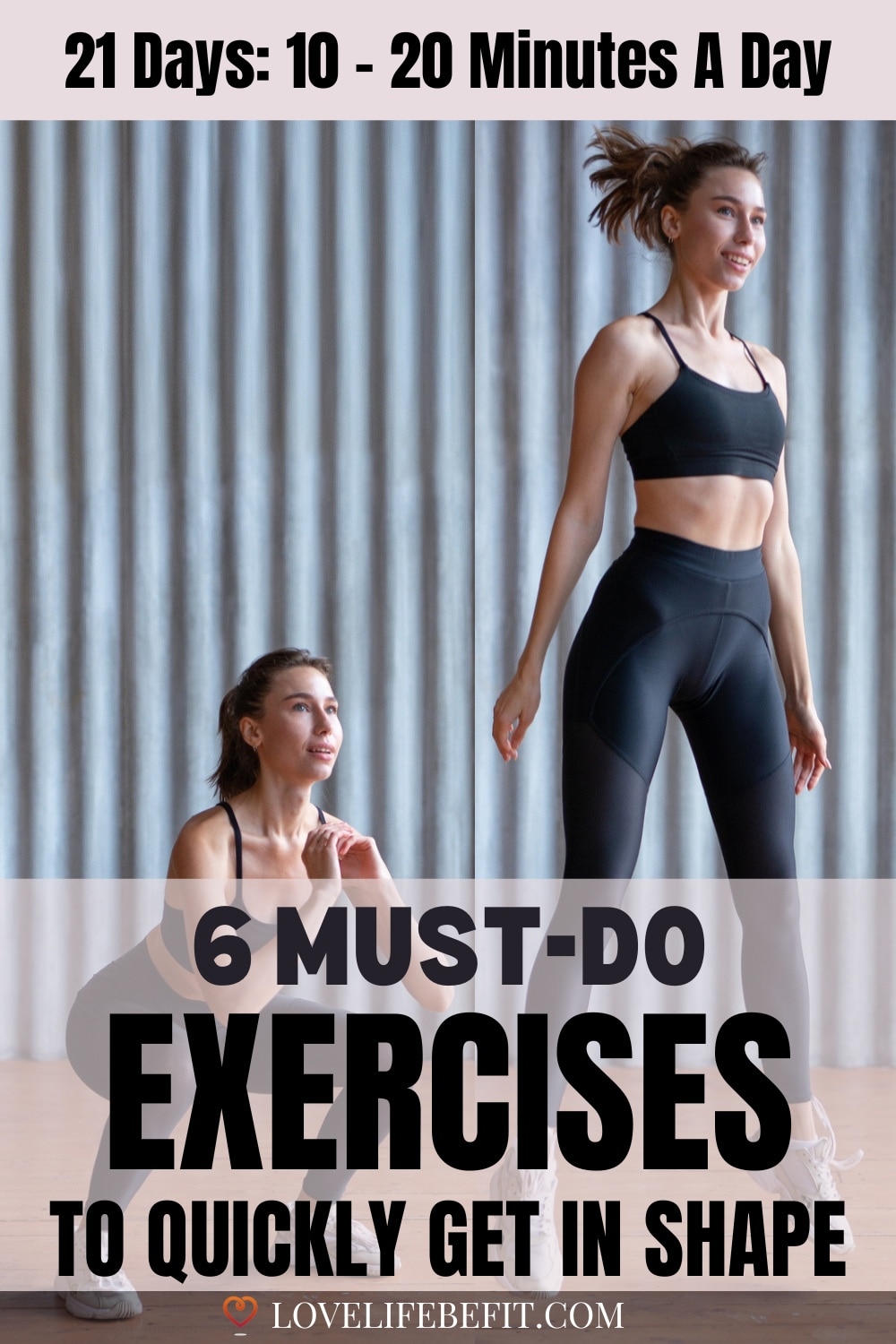
The Bodyweight Exercises For Beginners
1. Squats
This classic butt-strengthening exercise targets the quadriceps, glutes, and hamstrings and engages the core. It’s a full-body exercise. The trick is to keep your back straight.
- Stand with your legs just over hip-width apart, feet flat on the floor, and toes pointed slightly outwards.
- Keep your back straight and your chest upright.
- Bend at the knees and slowly squat down as far as possible. Imagine you’re trying to sit on a low chair.
- Drive through your heels to return to the standing position.
- For an extra effort level, start with your arms raised, and as you squat, bring your lower arms together in front of you.
Regression: Keep the dips shallow or hold onto a door frame or table as you squat to relieve some of the weight. Be mindful of your knees and don’t overdo it.

2. Squat Jump
Squat jumps are plyometric jumps: explosive exercises to help build power and strengthen your lower body. Always warm up with squats first.
- From your squat position, engage your glutes, quads, hamstrings, and core, then explode up and off the floor, extending your legs.
- Land toe-to-heel and bend your knees immediately to absorb impact, sinking back into a squat position.
Regression: Keep your jumps small until you build strength and your squat position shallow.
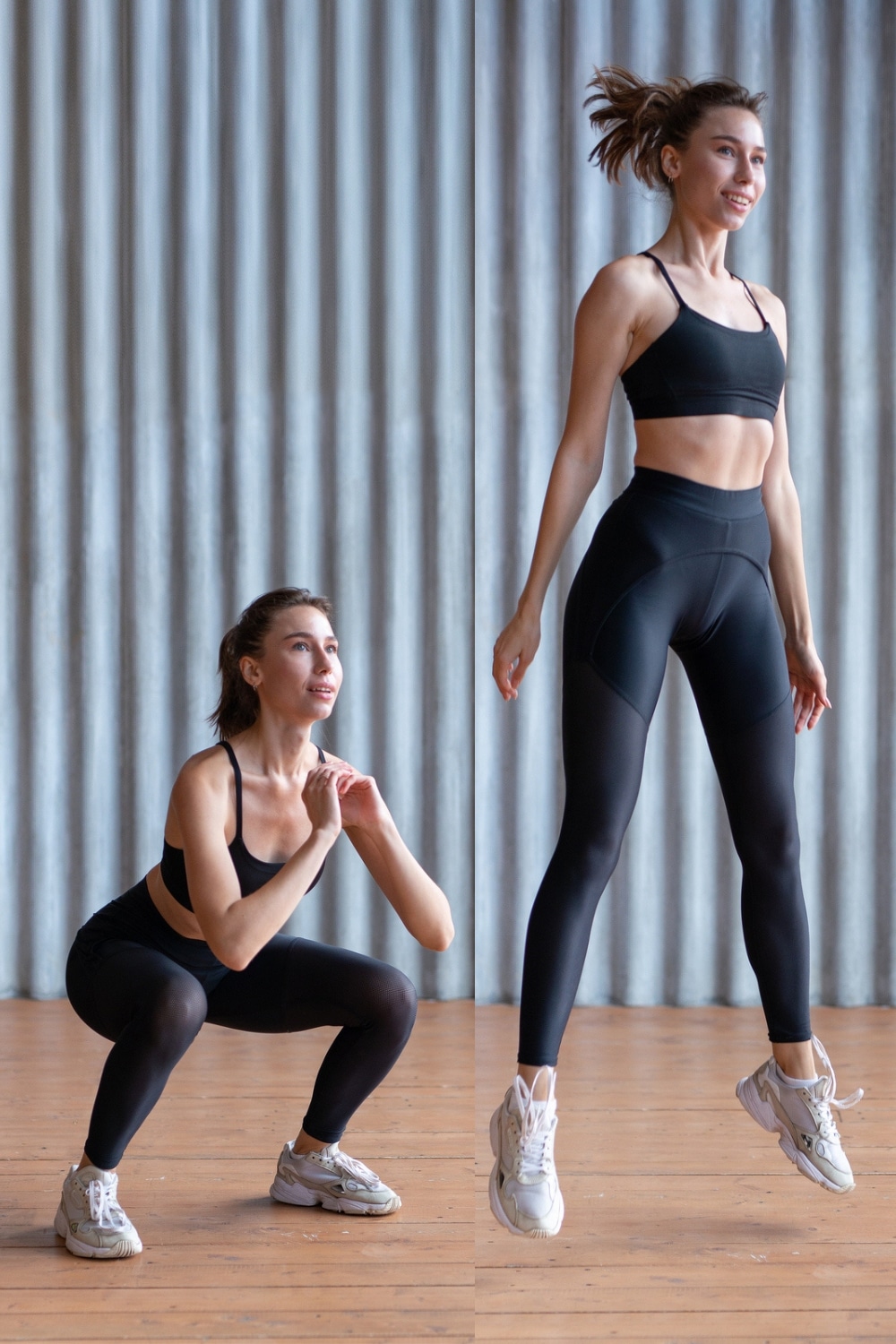
3. Reverse Lunges
The reverse lunge is a miracle worker for anyone with knee issues. It works the glutes, quadriceps, and hamstrings, but also engages the core, abductors, and calves for stability.
- Start in a standing position and engage your core muscles.
- Take a big step backward with your left foot. Sink your right knee to 90 degrees, and at the same time, lower your left knee so it’s hovering just off the floor.
- Push back up and return to the starting position.
- As you get stronger, you can try this exercise with a set of dumbbells.
Tips: Make sure your front knee doesn’t push past your toes. Maintain control throughout the lunge and avoid slamming your back knee into the ground.
Regression: Steady yourself with a hand on a chair or table until you can manage the movement unsupported.

4. Single Leg Glute Bridge
The single-leg glute bridge is a variation of the standard glute bridge and lets you isolate and target each glute muscle in turn.
- Lie flat on your back in a glute bridge starting position with knees raised and feet hip-width apart.
- Squeeze your glutes hard.
- Keep squeezing them as you raise one leg off the ground and extend it up into the air.
- Engage your core and drive your hips up, keeping your pelvis level and continuing to squeeze those glutes. Pause at the top and squeeze, squeeze, squeeze.
- Slowly lower your hips back to the starting point.
Regression: Start with the standard glute bridge (without raising one leg) until you’re strong enough to complete the single-leg version.
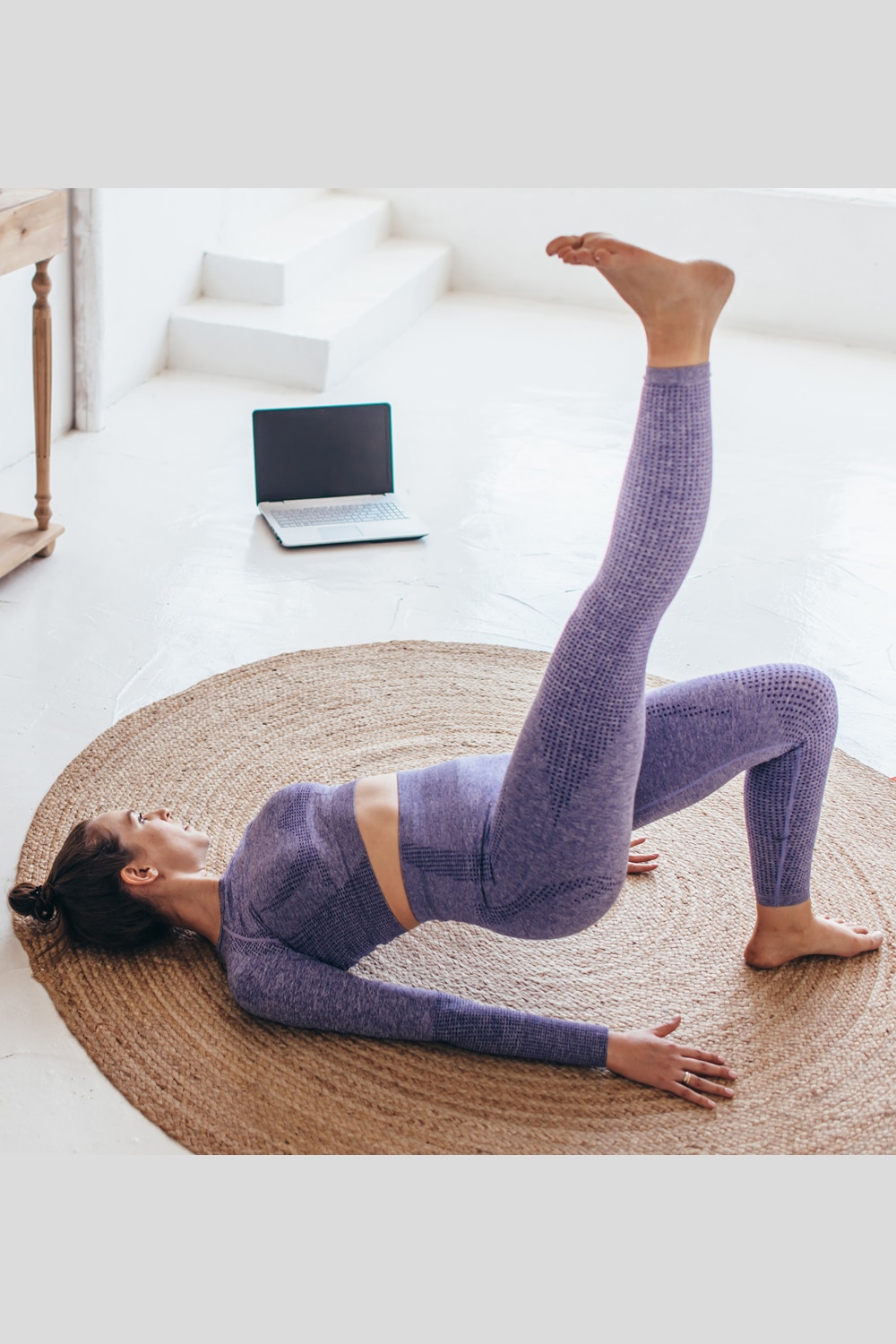
5. Plank
The plank is the ultimate core exercise for your abdominals and obliques (the muscles that run along the sides of your torso). With proper form, you’ll use your glutes to stop your hips from sagging and also feel the plank’s effects in your upper arms, shoulders, neck, upper back, and legs.
- To get into position, prop yourself on your forearms and hold your body in a straight line from your head to your toes.
- Squeeze your abs and glutes and imagine pulling your belly button into your spine.
- Gaze face down and keep your neck as relaxed as possible. Your shoulders should be pressed down, not up around your ears.
- And hold: for as long as you can without losing form. As soon as that butt starts to sag, take a break before restarting.
Regression: It’s better to hold a full plank for just a few seconds and repeat after a break than opt for a regression, but if you’re struggling to get into position, keep your knees on the floor and, with your core engaged, maintain a straight line from your head to your knees.

6. Plank Taps
Plank taps take planking to a whole new level. They improve posture and balance, strengthening the arms and shoulders, as well as the abdominals, obliques, and back muscles.
- Get into a straight arm high plank position. Brace your core, squeeze your glutes, and try to keep your pelvis level.
- Lift one hand and tap the opposite shoulder. Return to your starting position and repeat on the other side. Try to move slowly and aim to keep the rest of your body braced and motionless.
Regression: It’s harder than it looks, and it’s a good idea to practice first with your knees on the ground. If you’re struggling to keep your hips level, try placing your feet slightly further apart.

Plan A: 3-Week Bodyweight Workout Plan
Warm Up: 5 minutes of moving your body – walk, jog, dance, or shake your booty.
- 10 x squats
- 5 x squat jumps
- 5 x reverse lunges left leg
- 5 x reverse lunges right leg
- 5 x single-leg glute bridge left leg
- 5 x single-leg glute bridge right leg
- 30-second plank
- 5 x plank taps on each side (alternate)
Allow 5 minutes per set.
- Week 1: Complete one set every day— 10 minutes of exercise, including a warm-up.
- Week 2: Complete two sets every day— 15 minutes of exercise, including a warm-up.
- Week 3: Complete three sets every day— 20 minutes of exercise, including a warm-up.
Plan B: 3-Week Bodyweight Workout Plan Plus Cardio
Warm up: 5 minutes of moving your body – walk, jog, dance, or shake your booty.
- 10 x squats
- 5 x squat jumps
- 5 x reverse lunges left leg
- 5 x reverse lunges right leg
- 5 x single-leg glute bridge left leg
- 5 x single-leg glute bridge right leg
- 30-second plank
- 5 x plank taps on each side (alternate)
Allow 5 minutes per set.
- Week 1: Walk or run 10 minutes every day and complete one bodyweight exercise set— 20 minutes of exercise, including a warm-up.
- Week 2: Walk or run 15 minutes every day and complete two bodyweight exercise sets—30 minutes of exercise, including a warm-up.
- Week 3: Walk or run 20 minutes every day and complete three bodyweight exercise sets—40 minutes of exercise, including a warm-up.
Choose to walk or run depending on your fitness level. It should be a brisk walk or an easy run so that you’re slightly out of breath but still able to talk and complete the session. You can also alternate running and walking, for example, 1 minute of running followed by 1 minute of walking.
At the end of 3 weeks, you’ll notice a difference. You’ll be bounding up stairs, your arm muscles will look toned, and your butt will be firmer. You can keep repeating these exercises for beginners, focusing on your form or try out some other workouts such as:
